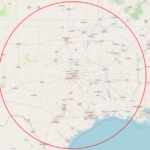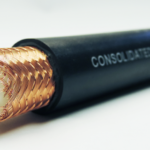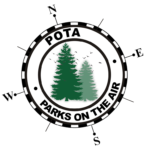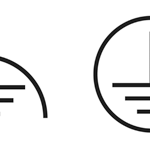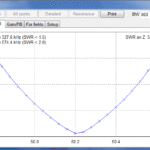By John DiFilippo AF5MN
I really enjoyed the RWK Parks-On-The-Air (POTA) group activity a couple of months ago when we activated the Spring Creek Forest Preserve in Garland. Seeing everyone’s go-kits and set-ups that day inspired me to try my hand at activating some parks on my own. So I decided to operate from Mother Neff State Park on my way back from the Belton Ham Expo in April.
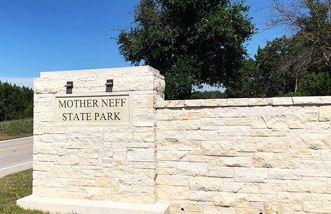
Mother Neff is a tiny state park about 10 miles west of I-35 on SH107. The drive on the way to and from the park passes through some really pretty Texas countryside and farmland as it takes you through Bruceville-Eddy and Moody. The Park Designator is K-3042 and the grid square is EM11gh. Mother Neff isn’t close to any high population areas so, as of this writing, it only has 119 activations (8035 QSOs) which is relatively low for park activations around the DFW Metroplex.
I paid the $2 entrance fee and got a quick rundown from the park ranger about some potential day-use designated areas with picnic tables that I might be able to operate from. The park isn’t that big and by the time I got there in the early afternoon most of the day-use picnic tables were already out in full sun.
Since I didn’t want to bake while operating I decided to take a little time exploring the whole park (which didn’t take long) looking for a shady location to operate from. I finally settled on a spot called “The Washpond” which is advertised as one of the park’s more scenic areas.
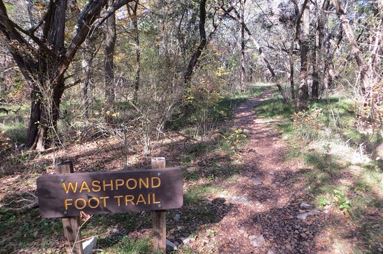
I parked the car, donned my POTA backpack, and found a nice spot about 30 meters off the road. I set up the radio and battery on a shaded bench overlooking the Washpond and the antenna in a small clearing about ten meters away and slightly uphill from the bench. I spread out the four radials as best I could without crossing any of the nearby hiking paths.
The first thing I like to do when operating POTA is to extend the whip antenna to its full height (~17 ft.) and then just listen for activity on several different bands. If one band seems hotter than the others I adjust the 17 ft. whip to the appropriate height for that band and get on the air.
I was hoping to operate on 10M but that band was pretty dead that afternoon. 20M showed a little more activity so that’s the band I picked to operate on. I left the whip extended to its full height and made a final check with my antenna analyzer. It showed an SWR of about 1.3:1 in the middle of the phone section of the 20M band so I hooked the antenna straight to my IC-706MkIIg without even using a tuner.
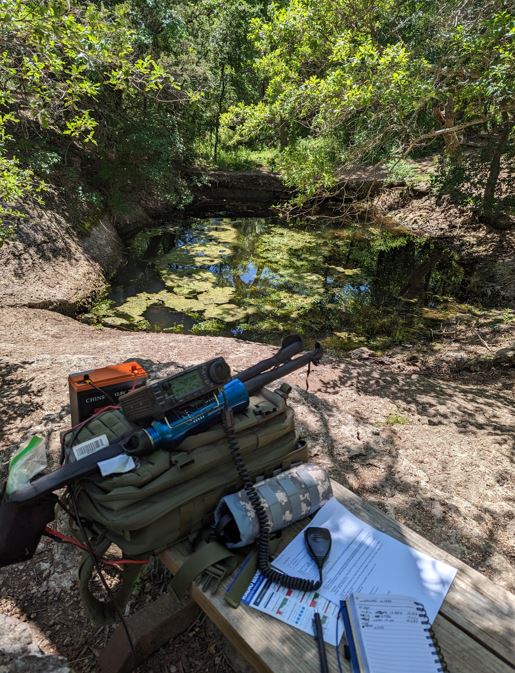
For side-band operation I like to stay in the general portion of whatever band I’ve chosen in order to improve the odds of being spotted by hams with a general, advanced, or amateur extra license. If I’m working 10M I like to stay in the technician portion of that band for the same reason.
The 20M band conditions weren’t really the best that day either because there was a lot of slow-moving QSB. Also, my hearing isn’t that great so digging QSOs out of the noise was sometimes a little challenging. But luckily nobody was in too big of a hurry so we just repeated our calls and signal reports until we were sure we got them correct.
I didn’t have cellphone access where I was in the park so I logged on paper. I made sure I logged the frequency, UTC time, call sign, and signal report so that I could enter them in QRZ.com when I got home. From QRZ.com I generated an ADI file which I then uploaded to the Parks-on-the-Air website, to eQSL, and to Logbook of the World (LoTW).
I employ two strategies when activating a park. For the first half of my activation, I like to warm-up with a little Search-and-Pounce (S&P). I just tune up and down the band hunting hams that are calling CQ. Even if your signal is weak, CQing stations will an effort to pick you out of the noise if they know you’re activating a park. It’s also especially fun to answer a CQ from another park activator. Saying “PARK-TO-PARK” is a great pile-up buster because the other activator will put all other hunters on standby in order to complete a QSO with you.
Once I’d hunted for an hour or so I decided to switch to my second strategy and become the prey rather than a hunter. I found a (relatively) quiet part of the 20M band and started calling “CQ POTA.” That is called Running and is an effective strategy because there are lots of hunters eager to log new parks in their pursuit of awards and recognition on the POTA website. Running is also a blast because you get to be the center of a pile-up. I averaged better than one QSO per minute for a little over 30 minutes.
After nearly two hours on the radio, the sun had traveled far enough that I was no longer in the shade. I decided I had more than enough QSOs to activate the park (you only need 10) so instead of scooting over into the shade I decided just to pack-up and head back to Dallas.
I’d like to give a quick shout-out here to Bob Hill (KG5WRY) for his Feb-2023 Chawed Rag article titled, “A Low Cost Quick Deploy Portable Antenna.” So far I have used that antenna on many different occasions on 10M, 17M, and 20M with excellent results and all without a tuner. On a different POTA outing using that antenna, I was able to complete QSOs on 10M with V51MA in Namibia, KH6CB in Hawaii, and VQ5Q on the middle island of Turks and Caicos. I’d also like to acknowledge David Cappello (KG5EIU), Don Weeks (N5SKT), and Carl Solomon (W5SU) who have all been wonderful POTA and portable-ops mentors to me. They’ve given me lots of advice on some good parks to activate and useful accessories to have in my POTA backpack. You should check out some of David’s POTA/SOTA adventures on his website. You should also check out Don’s YouTube channel for some of his informative videos. Carl and I have operated portable together at several nearby parks over the years and I’ve benefited immensely from his many decades of amateur radio experience.
POTA is definitely one of the best things that has happened to ham radio in quite a while. If you are interested in activating parks, If you think you’d like to try your hand at POTA, I suggest you create an account on the POTA website before leaving home. That way when you are activating a park (assuming you have internet access) you can self-spot on the POTA spotting page which is a great way to create an almost instantaneous pile-up. If you don’t have internet access, you can always ask one of the hunters who answer your CQ to post your call sign, park, and frequency for you.
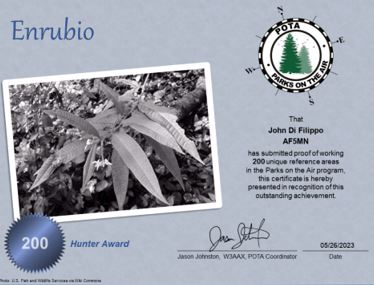
No doubt POTA is a rewarding activity to do alone, but in my opinion, it’s way more fun to activate parks with others. I was originally planning to activate Mother Neff State Park with Joey White-Swift (KG5MKQ) but he had to cancel at the last minute so I had to operated solo. But Patty (my XYL) has accompanied me to activations at Cedar Hill State Park, Dinosaur Valley State Park, and Eisenhower State Park. We make a day of it by operating, grilling out, and sightseeing.
As of today I’ve hunted 213 parks in 36 states and activated five parks in the North Texas area. I’ve also logged a few QSOs with parks in Canada and Mexico. I have definitely caught the POTA bug and am looking forward to activating many more parks as well as hunting for parks in the 15 states that still elude me.
73 de AF5MN

